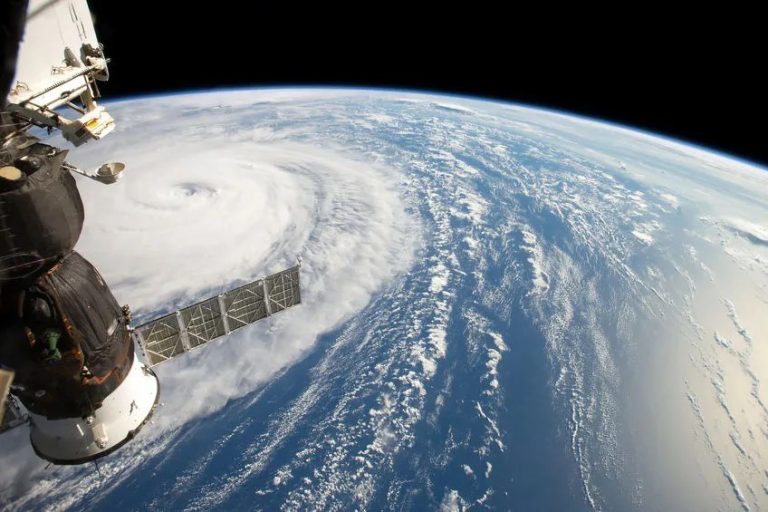from NoTricksZone
Reporting from Germany edited by KlimaNachrichten
“Science is far from reaching the end of its knowledge”

symbolic image. Source: NASA
According to the US weather agency NOAA, hurricane season lasts from June 1 to November 30 each year. During this period, the conditions necessary for the formation of extreme pressure areas dominate. First and foremost, Atlantic water temperature is decisive, but so is wind shear.
Storms are actually expected this year too. So far, however, there have been few storms.
X, American meteorologist Ryan Mauer Think about possible reasons and ask colleagues to think about why these models have failed so far this year. Some storms move away from land to the north, where they weaken, affecting only parts of the east coast of the United States or Canada. At some point, they reached an area of low pressure in Europe.
saharan dust
Maue suspects a number of causes: eruptions of the Hunga Tonga volcano or large amounts of Saharan dust over the Atlantic Ocean. Moir points out that the absence of hurricanes doesn't entirely violate conventional theories of climate change. Storms are expected to decrease but could be more severe. So far, they have not materialized, which is a blessing for those who may be affected. The Sahara itself is currently experiencing a very rare weather phenomenon. As far as the conditions are out there, it's raining heavily.
Meteonews.ch:
The cause of this precipitation pattern can be found in the so-called Intertropical Convergence Zone (ITCZ). The area around the equator where trade winds from the northern and southern hemispheres meet. The wind here is light but the humidity is high. The area is known for heavy rainfall and thunderstorms, which occur when warm, moist air rises, cools, and then falls back to the ground as rain. The ITCZ is a low-pressure trough that extends around the globe and follows the sun's highest point, with a delay of about 3 to 4 weeks. Depending on the proportion of land and water, the ITCZ is regionally deflected more to the north or south. Because land has a significantly lower heat-storage capacity compared to water masses, land heats up faster than the ocean, and the ITCZ meanders more strongly here.
Regarding the hurricane that failed to materialize, the website writes:
Typically, wave weather systems (so-called African easterly waves, or AEWs) form at this time of year, moving from east to west, usually from the Guinea highlands across the equatorial Atlantic, and producing hurricanes. Currently, this process is somewhat suppressed, resulting in reduced tropical activity in the Atlantic Ocean. At the beginning of hurricane season, this year's hurricane season is expected to be more active due to high water temperatures and the transition to La Niña conditions.
Both incidents are strong evidence that science is far from the end of its knowledge in this area and that research is still important.
Relevant
